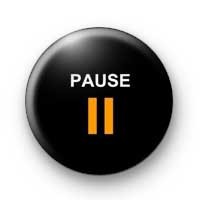
Your first practical opportunity to use the pause button arrives before you participate in the first session of a negotiation. Ask yourself whether you are as prepared as you need to be. Then, when the first sentence is uttered, you’re ready to listen because you have pushed that pause button. When you speak your first words, you are clearer for having taken that break. Use the pause button at each critical moment to review the negotiation or to decide when to close a deal. Definitely use the pause button whenever you are feeling pressured or under stress.
Of course, the pause you take is only as valuable as what you do during it. Ask yourself specific questions during these brief respites. Circumstances differ for every negotiation. Usually, you need to ponder a specific point. You may want to use the time to check over the other five essential skills in a negotiation:
- Prepare: Do you need any additional pieces of information?
- Set goals or limits: How close are you to your original goals? Is the shortfall acceptable? Are the limits you previously set still viable considering the additional information you have gained during the negotiation?
- Listen: Did you hear everything the other person said? Did it match up with the body language? Do you need to go back and ask any questions?
- Be clear: Do you wish you had expressed a point or an idea more clearly or directly? Try to answer this question from your counterpart’s point of view, not yours.
- Know when to close: Can any part of the negotiation be closed now? If it seems like everyone is in agreement, have you had plenty of time to live with the final proposal before accepting it?
When you become conscious of pushing the pause button and what to do during the pause, such a quick review as the preceding one is almost automatic. Sometimes you are just giving your mind a break. Sometimes you are pushing the pause button for everybody involved in the negotiation, especially if things have gotten a little heated.
Parties can get caught up in the emotions of a negotiation. They’re afraid to lose face. They become angry or distrustful of the other party. They fall in love with the deal and ignore facts that are important to decision making —especially if the decision ought to be to walk away. They let their own moods, or the moods of the other party, rule the negotiating sessions, causing the negotiations to wander off course. These problems disappear when you use a pause button.
If you want to watch a negotiator with his hand firmly on the pause button, see the HBO movie Barbarians at the Gate. This film, based on a true story, stars James Garner as the president of Nabisco and depicts his efforts to buy the company. Unfortunately for him, another buyer — played by Jonathan Pryce — is better prepared and carries a pause button with him everywhere. Watch him make millions of dollars by delaying a deal one hour. This movie is a fast-paced, exciting lesson in high-stakes negotiating. What separates the winner and the loser are preparation and the effective use of the pause button.



